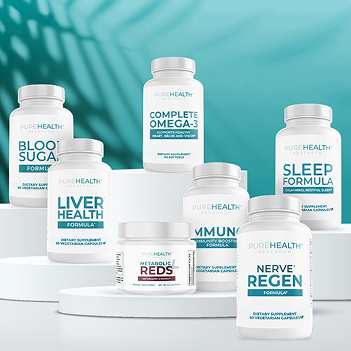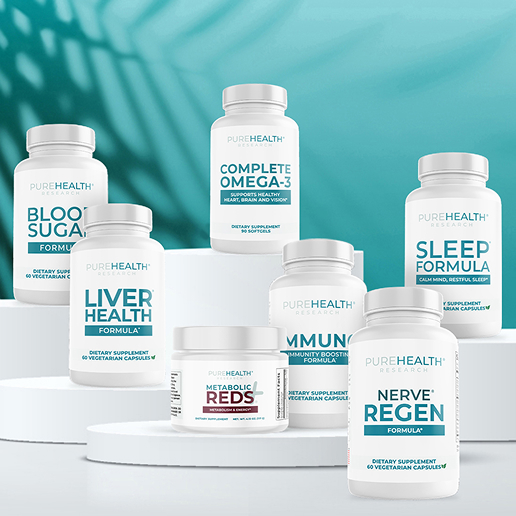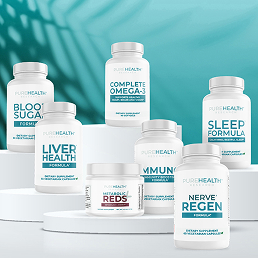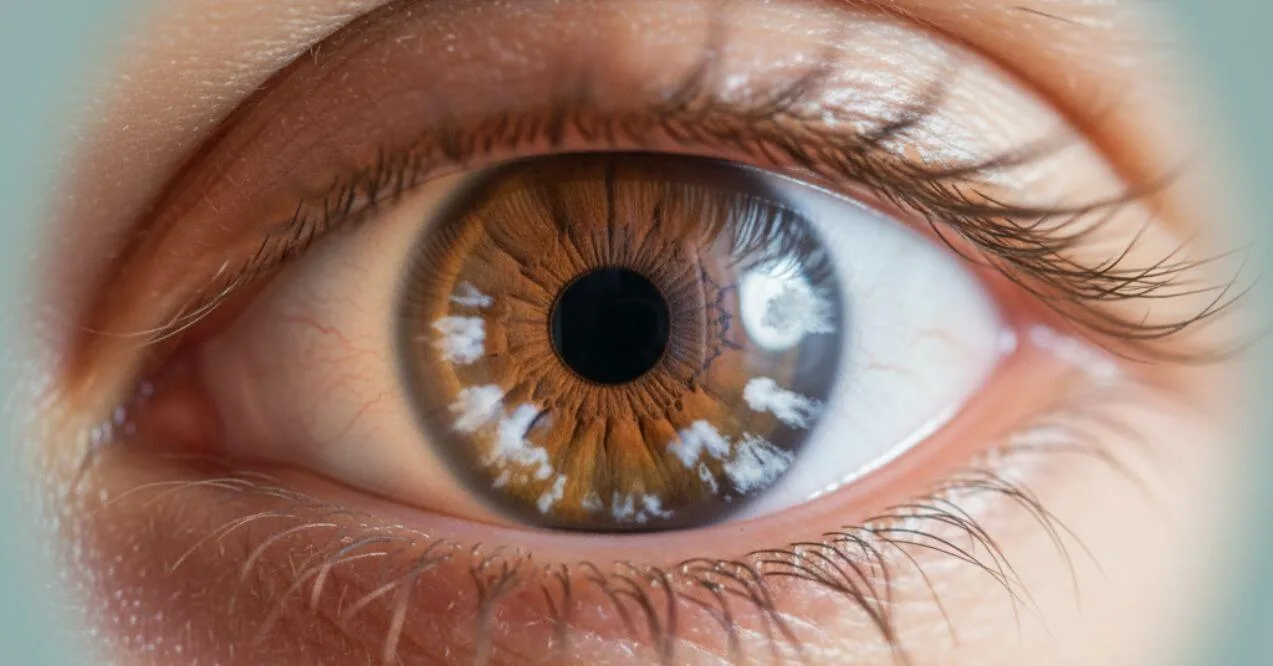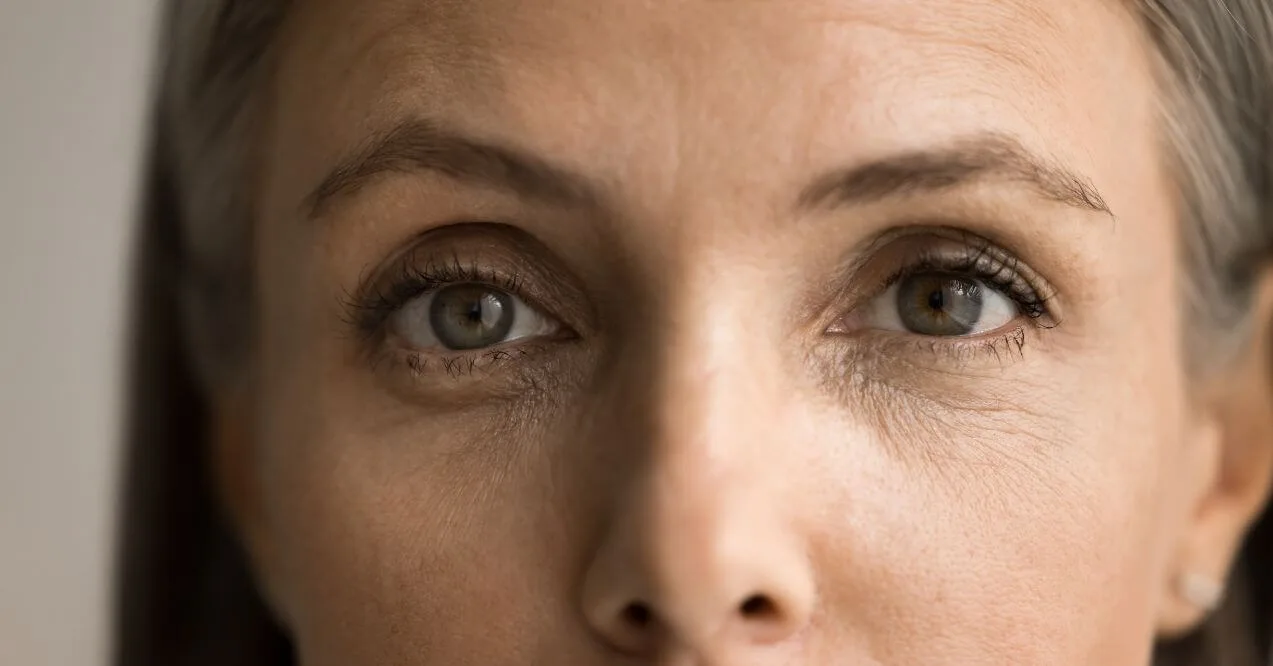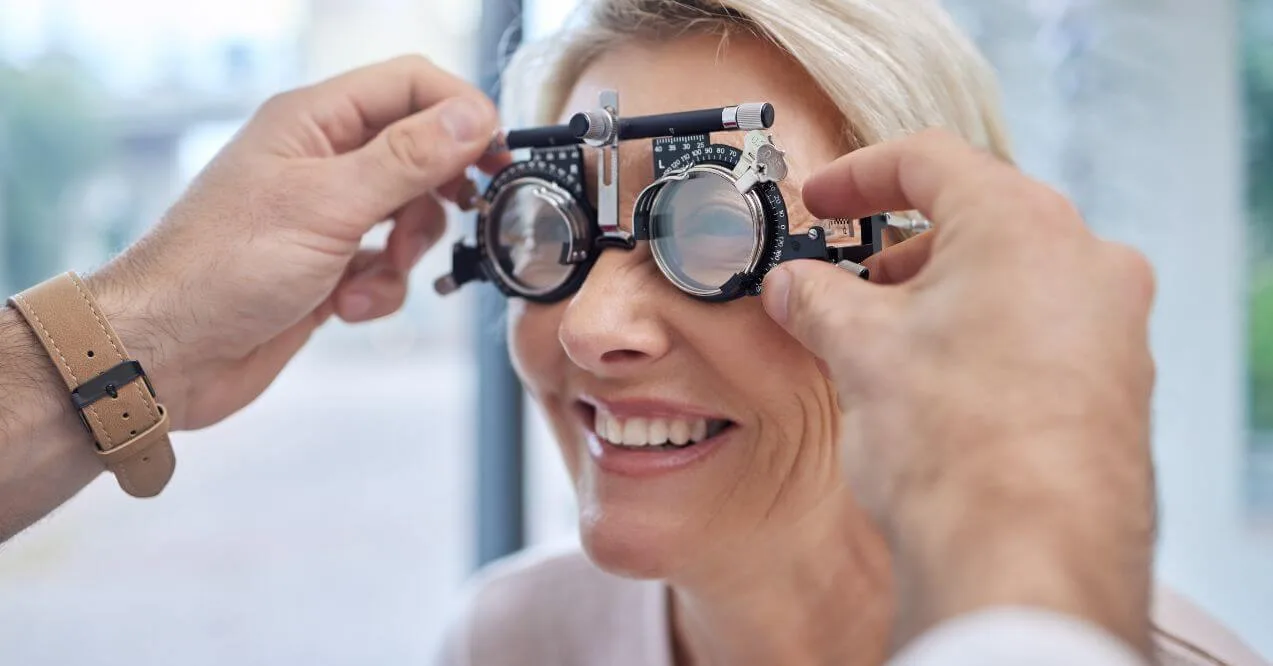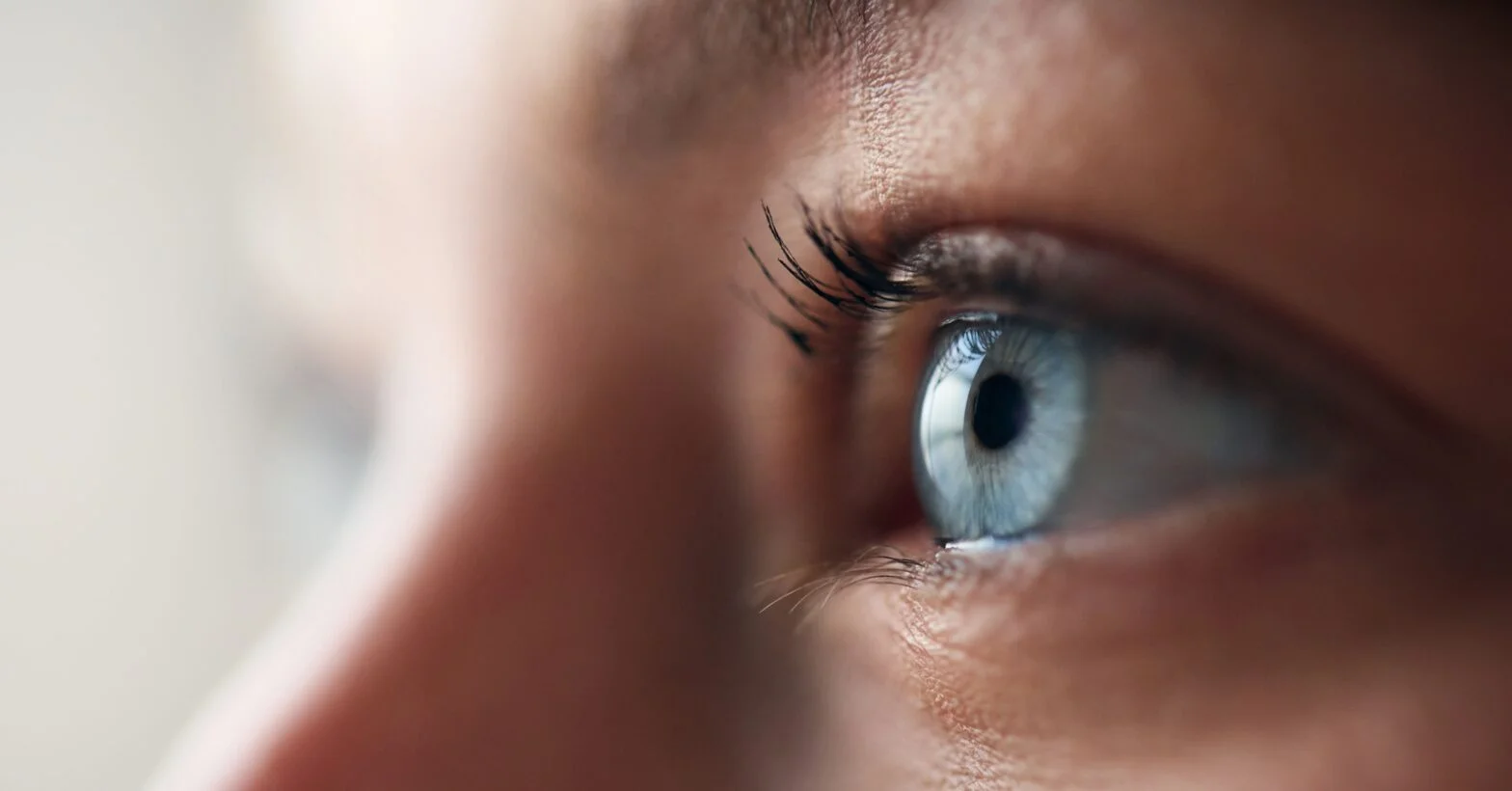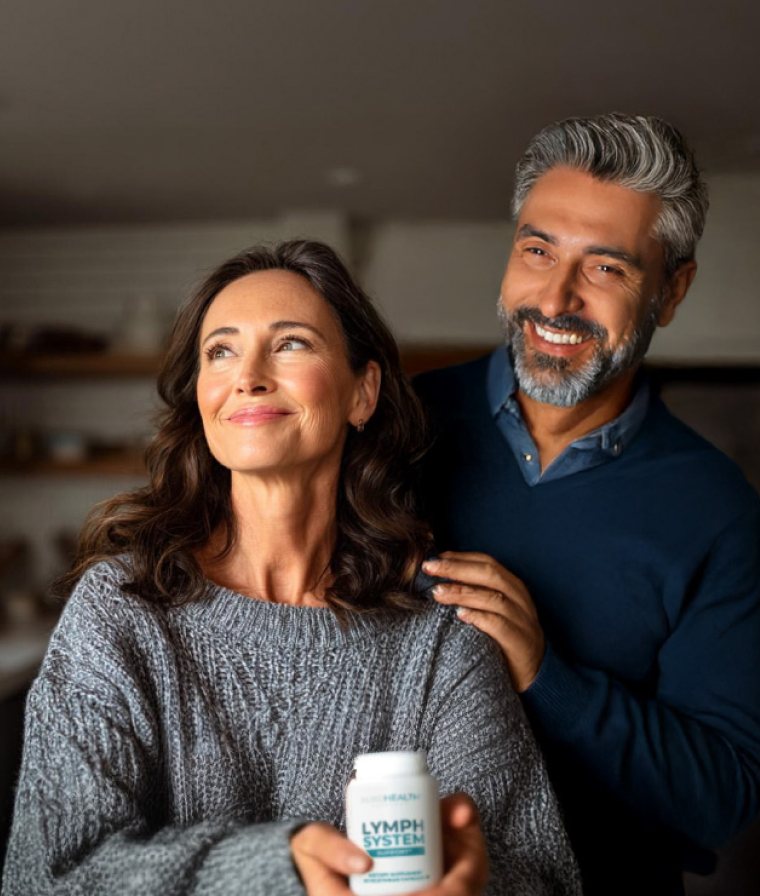What is Normal Eye Pressure for Seniors?
Discover what is normal eye pressure for seniors and how to maintain healthy readings. Learn about measurement, risk factors, and warning signs.
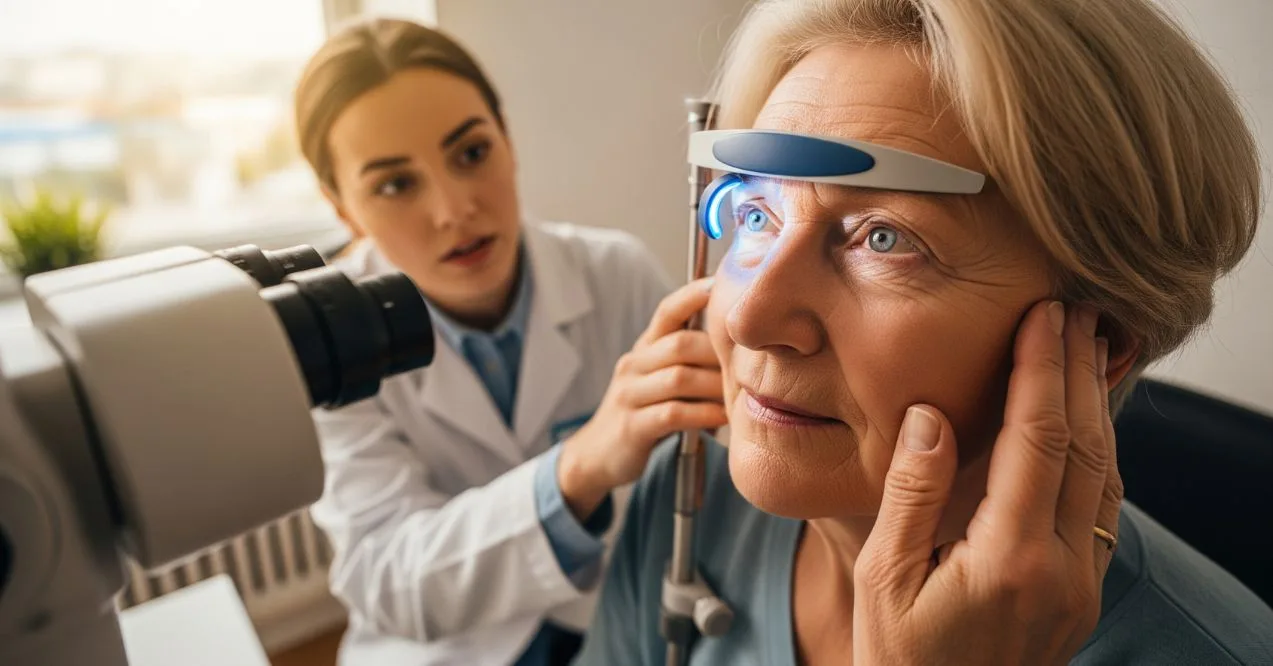

As we grow older, caring for our eye health becomes increasingly important. One key factor to monitor is eye pressure, which plays a vital role in maintaining clear vision and overall eye function. Eye pressure, also known as intraocular pressure (IOP), is the fluid pressure inside the eye. When this pressure is too high or too low, it may impact vision over time.
Understanding what is normal eye pressure for seniors can help support long-term eye health and reduce the risk of vision-related challenges, including those linked to increased eye pressure like glaucoma.
What is Normal Eye Pressure for Seniors?
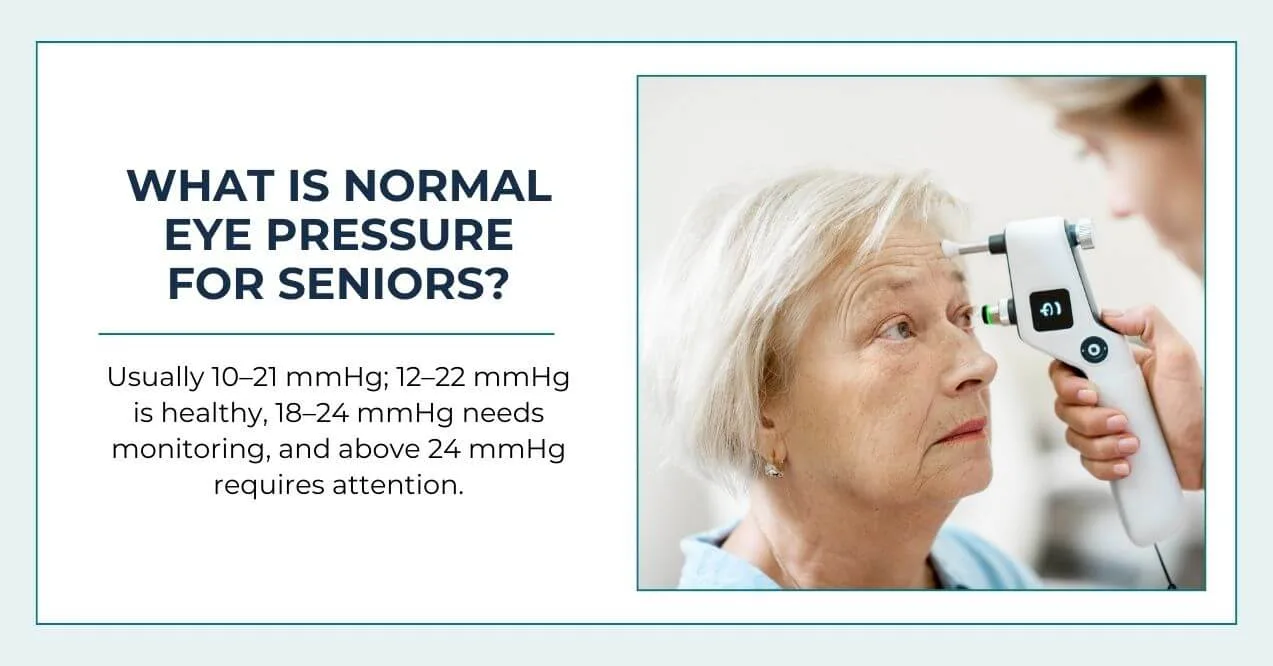
Eye pressure, or intraocular pressure (IOP), refers to the fluid pressure inside your eye. This pressure helps maintain the eye’s shape and proper function. For seniors, understanding your average normal eye pressure becomes particularly important as pressure changes can occur naturally with age.
In general, normal eye pressure ranges between 10-21 millimeters of mercury (mmHg). However, what’s considered “normal” can vary from person to person, especially in seniors. For individuals over 60, eye specialists may consider:
- 12-22 mmHg as the typical range for healthy seniors
- 18-24 mmHg might warrant closer monitoring but isn’t necessarily concerning
- Above 24 mmHg typically requires more attention and regular monitoring
It’s important to understand that a single pressure reading doesn’t tell the complete story. Many seniors maintain excellent eye health with pressure readings slightly outside the typical range. What matters most is how your pressure changes over time and how your eyes respond to that pressure.
Several factors can influence what’s normal for you specifically:
- Your family history
- The thickness of your cornea
- Your overall eye health
- Changes in your pressure readings over time
- How your optic nerve appears during examinations
Normal Eye Pressure Range for Seniors
Understanding your normal eye pressure range becomes increasingly important as you age. While the standard range for adults typically falls between 10-21 millimeters of mercury (mmHg), seniors may experience slight variations that remain perfectly healthy.
| Age Group | Typical Eye Pressure Range (mmHg) |
| 50-59 | 12-21 |
| 60-69 | 13-22 |
| 70-79 | 14-22 |
| 80-89 | 14-23 |
| 90+ | 13-24 |
How is Eye Pressure Measured?
Eye pressure measurement, known as tonometry (sometimes referred to as tanometry), is a quick, painless procedure performed during routine eye examinations. This vital test helps detect pressure changes before they affect your vision.
Several methods are commonly used to measure eye pressure:
- Air Puff Test (Non-contact Tonometry) – A gentle puff of air is directed at your open eye. The eye’s resistance to the air determines the pressure reading. This method is quick and doesn’t require eye drops.
- Goldmann Applanation Tonometry – Considered the gold standard for accuracy, this test uses a small probe that gently touches the front surface of your eye after numbing drops are applied. It provides highly reliable measurements.
- Handheld Tonometers – These portable devices are particularly useful for those who have difficulty positioning at traditional equipment.
Factors That Can Affect Eye Pressure in Seniors
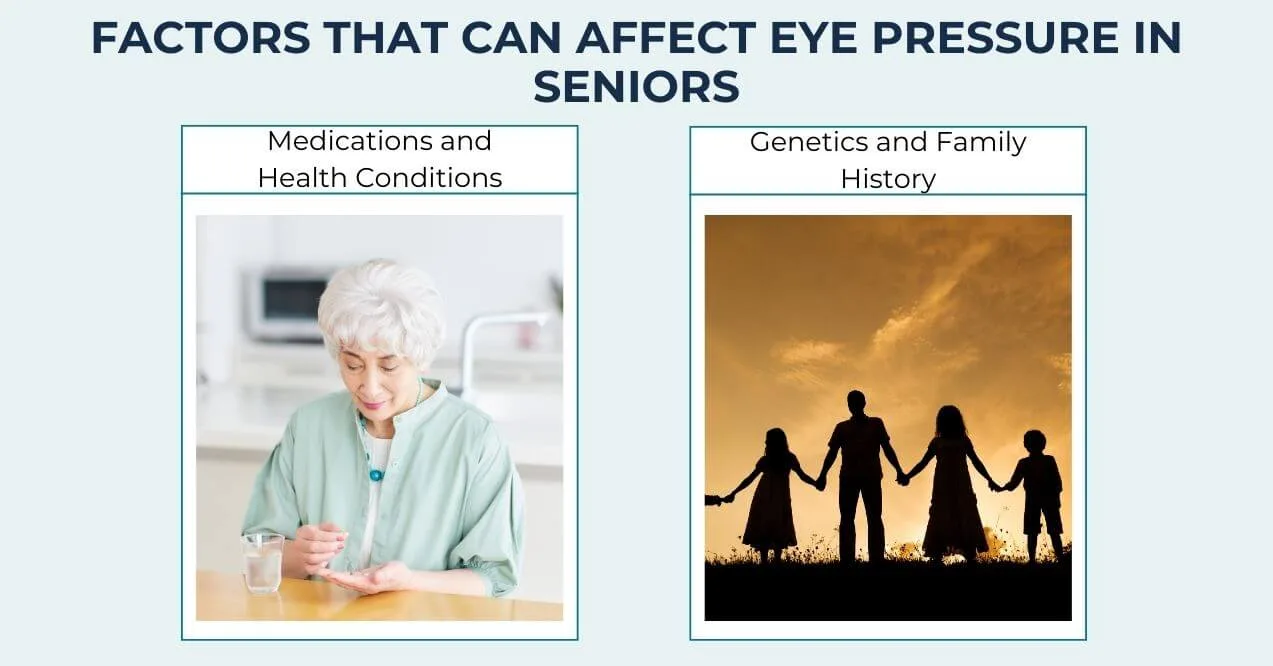
Several factors can influence eye pressure levels as we age, ranging from genetics to lifestyle choices. Understanding these factors helps seniors take appropriate steps to maintain healthy pressure levels.
Genetics and Family History
Your genetic makeup plays a significant role in determining your eye pressure baseline and risk factors. Seniors with a family history of pressure-related eye conditions may experience naturally higher pressure readings. If your parents, siblings, or other close relatives have experienced elevated eye pressure or related conditions, your risk increases by approximately 4-9 times.
Family history doesn’t guarantee you’ll develop pressure concerns, but it does signal the need for more vigilant monitoring. Those with genetic predispositions benefit from more frequent examinations – typically every 6-12 months rather than the standard biennial checks. Early detection through regular monitoring remains the most effective approach for those with hereditary risk factors.
Medications and Health Conditions
Certain medications can temporarily or permanently alter your eye pressure levels. Corticosteroids, particularly when used long-term or in high doses, may raise pressure in some individuals. Similarly, certain antihistamines, decongestants, and anti-anxiety medications can affect fluid production in the eye.
Health conditions like hypertension can also impact your eye pressure by affecting blood vessel function and fluid dynamics within the eye. When blood pressure rises, it can sometimes influence the pressure inside your eyes as well.
Individuals with thyroid conditions may experience changes in eye pressure due to the relationship between thyroid hormones and eye tissue. Additionally, autoimmune conditions can sometimes lead to inflammation that affects pressure regulation mechanisms within the eye.
When Should Seniors Be Concerned About Eye Pressure?
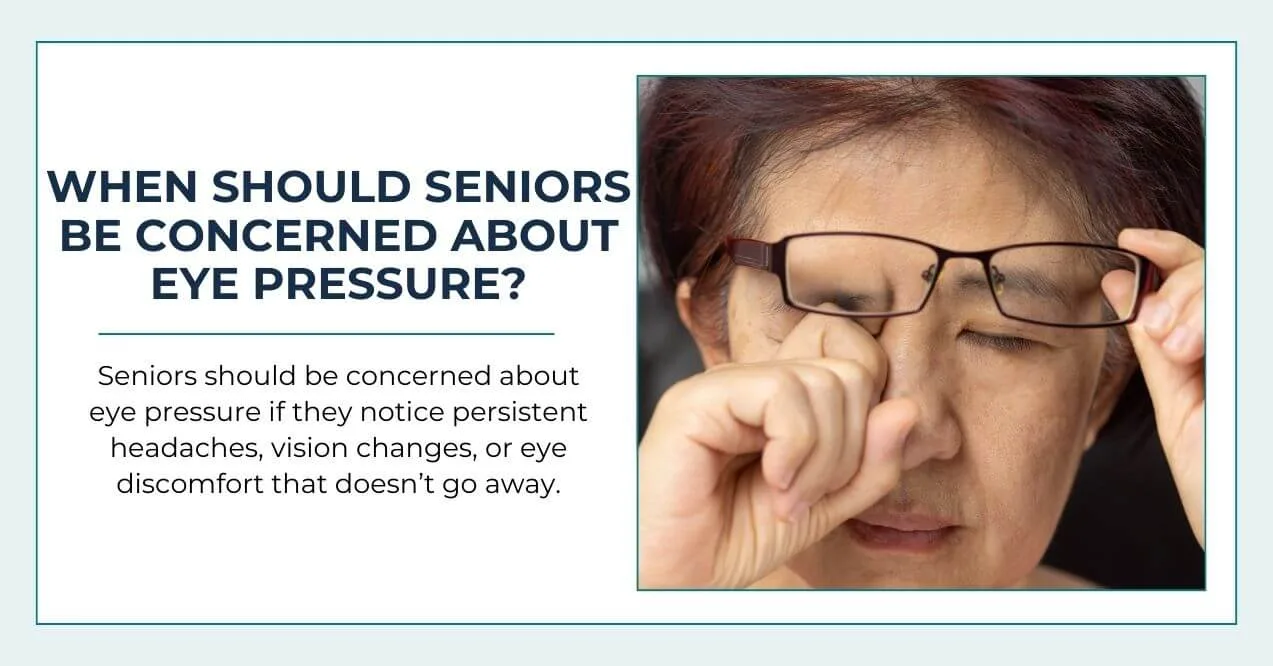
While occasional mild discomfort is normal, certain signs may indicate potentially unhealthy eye pressure levels that warrant attention. Being aware of these warning signs can help protect your vision and eye health.
Pay particular attention to these potential indicators:
- Frequent headaches, especially around the eyes or forehead
- Halos around lights, particularly when driving at night
- Blurry vision that comes and goes
- Eye pain that doesn’t resolve with rest
- Gradual loss of peripheral vision
- Sudden changes in vision clarity
- Difficulty adjusting to dark rooms
- Unusual sensitivity to light
If you experience any of these symptoms – especially if they persist for more than a day or two – schedule an eye examination promptly. Don’t wait for your regular check-up if these symptoms appear.
How to Maintain Healthy Eye Pressure for Seniors
Maintaining healthy eye pressure is an important aspect of preserving vision as we age. Several lifestyle strategies can help support optimal pressure levels and promote overall eye health.
Diet and Lifestyle Changes
What you eat plays a significant role in supporting eye health and maintaining proper pressure levels. A nutrient-rich diet can provide essential compounds that support healthy eye function:
- Foods rich in antioxidants like berries, leafy greens, and colorful vegetables help protect delicate eye tissues
- Omega-3 fatty acids found in fish, walnuts, and flaxseeds support proper fluid circulation
- Vitamin C from citrus fruits and bell peppers contributes to collagen production, which maintains eye structure
- Staying properly hydrated helps ensure proper fluid balance throughout the body, including the eyes
- Regular moderate exercise improves circulation to the eyes and may help regulate pressure
- Limiting caffeine and alcohol can help avoid temporary pressure spikes
- Managing stress through relaxation techniques may help maintain consistent pressure levels
Supplements for Eye Health
While a balanced diet provides many essential nutrients, specific supplements can help support optimal eye function, especially for seniors.
For those exploring how to improve eye sight, Complete Vision Formula offers comprehensive nutritional support for maintaining eye health in our modern, screen-filled world. This specialized formula is designed for individuals who experience daily eye strain from digital devices, bright lights, and busy lifestyles.
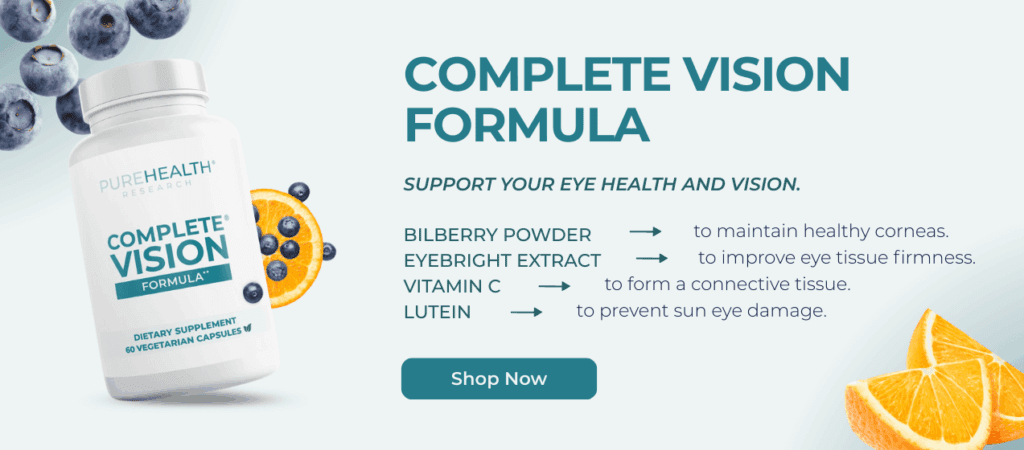
The supplement contains key nutrients including:
- Vitamin C, which supports collagen formation and helps maintain the structure of blood vessels in the eye
- Zinc works with vitamin A to produce melanin, a pigment that protect your eyes
- Vitamin E protects eye cells from damage caused by free radicals
These carefully selected ingredients work synergistically to support proper circulation to the eyes and maintain visual function. Regular use alongside healthy lifestyle practices creates a comprehensive approach to maintaining eye health as you age.
Conclusion
Understanding what is normal eye pressure for seniors is an essential part of maintaining eye health as you age. While typical ranges fall between 10-21 mmHg, individual variations are common and perfectly normal. Regular eye examinations, a nutrient-rich diet, proper hydration, and stress management all contribute to maintaining healthy pressure levels.
By recognizing warning signs and taking proactive steps to support eye health, seniors can protect their vision and maintain quality of life for years to come.
For most 70-year-olds, a healthy eye pressure typically falls between 14-22 mmHg. However, individual variations exist, and what’s “normal” depends on factors like corneal thickness, family history, and overall eye health.
Pressure consistently above 24 mmHg may warrant closer monitoring, while readings below 10 mmHg might indicate inadequate pressure support. The concerning factor isn’t always a single reading but persistent changes from your baseline or accompanying symptoms.
A reading of 26 mmHg is above the typical normal range and generally warrants additional monitoring. However, this single measurement should be considered alongside other factors like corneal thickness, optic nerve appearance, and your personal pressure history.
Sign up for our Healthy Living newsletter!
Advertisement. This site offers health, wellness, fitness and nutritional information and is designed for educational purposes only. You should not rely on this information as a substitute for, nor does it replace, professional medical advice, diagnosis, or treatment. If you have any concerns or questions about your health, you should always consult with a physician or other health-care professional. Do not disregard, avoid or delay obtaining medical or health related advice from your health-care professional because of something you may have read on this site. The use of any information provided on this site is solely at your own risk.
